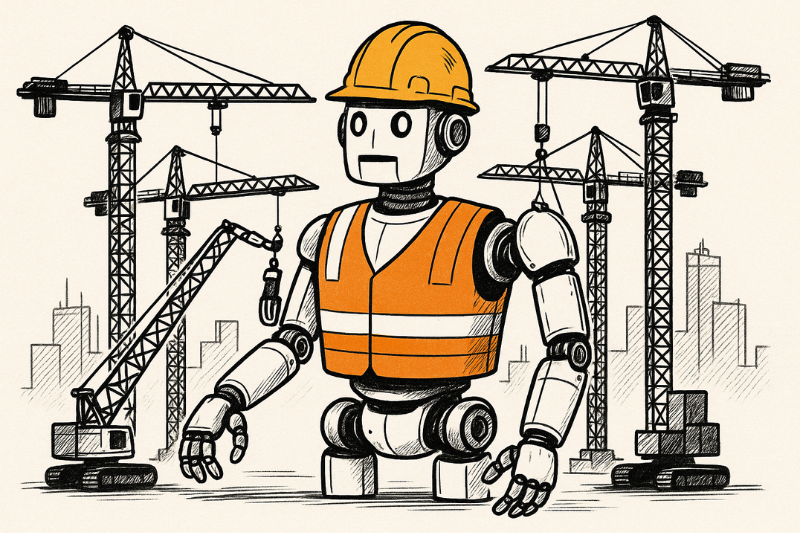Nearly nine in 10 Canadian construction leaders say the industry must quickly adopt new technologies to boost productivity and meet growing demand, according to a new KPMG report that highlights how digital tools are beginning to transform the sector.
The report on digital maturity in construction found that 81 per cent of companies say their recent technology investments are already making a difference, as the industry faces mounting pressure to build more housing and infrastructure while dealing with an aging workforce.
“It is good to see that the sector has finally been investing in the technologies that are desperately needed to address persistently poor productivity levels,” said Tom Rothfischer, partner and national industry leader for building, construction and real estate at KPMG in Canada. “These investments are about to pay dividends and transform how we build in Canada.”
However, Rothfischer warned that current economic pressures could threaten continued technology spending that is essential for addressing Canada’s housing shortage and supporting major infrastructure projects.
Labour shortage drives technology adoption
The construction industry’s labour challenges are expected to worsen as the workforce ages, with nearly three-quarters of leaders expecting it will become increasingly difficult to meet demand over the next five to 10 years as retirements outpace recruitment.
Currently, 78 per cent of construction companies experience skilled worker shortages, though this represents an improvement from 90 per cent in 2023. The labour crunch affects 70 per cent of companies’ ability to bid on new projects or meet deadlines, down from 86 per cent two years ago.
“The pressure is intensifying on the construction industry to do far more with less,” said Jordan Thomson, director of global infrastructure advisory at KPMG in Canada. “The industry is well aware of their labour conundrum, with eight in 10 companies still experiencing a shortage in skilled labour that’s affecting their ability to take on new work and complete current jobs.”
Technology priorities span supply chain to robotics
Construction companies are investing in a wide range of technologies to improve productivity. More than half (56 per cent) rank demand-driven supply chain innovation as their top priority, using digital tools and data analytics to provide real-time visibility into projects and material requirements.
Other key technology priorities include:
- Prefabrication and modularization (53 per cent making it a top or high priority)
- Artificial intelligence and AI-driven software (53 per cent)
- Robotics, drones and exoskeletons (40 per cent)
The technologies include building information modelling (BIM), which provides comprehensive digital project views from design to materials, and modular construction that reduces waste by building components in controlled factory environments before transporting them to sites for assembly.
“We’re seeing much more interest in tech adoption compared to where we were even two years ago. However, the sector still has a long way to go to move the needle on productivity,” Thomson said. “Making a commitment to invest in technology is the first step. Delivering returns requires careful integration and only works if you also invest in up-skilling your people to use it effectively.”
Clients influence technology adoption
The report found that clients who commission construction projects play a significant role in encouraging technology adoption. Nearly eight in 10 respondents (78 per cent) say procurement processes are changing to encourage innovation and digital adoption, while 43 per cent indicated their clients are highly influential in technology adoption decisions.
“It’s encouraging to see signs that procurement is beginning to evolve, but we’re not there yet,” said Rodrigue Gilbert, president of the Canadian Construction Association. “Too often, the system prioritizes lowest price over long-term value, which prohibits investment in innovation.”
Gilbert called for government procurement reform to foster collaboration, ensure fair risk-sharing and create confidence for companies to invest and grow.
Trade barriers add productivity challenges
The industry also wants to see interprovincial trade barriers eliminated, with 84 per cent of respondents supporting their quick removal. Thomson noted that working under 14 different sets of provincial rules creates an unnecessary drag on productivity.
“The challenges of working under 14 different sets of provincial rules and regulations is a further and unneeded drag on productivity that needs to be addressed if we expect the industry to be able to handle the growing volume of projects in the pipeline,” he said.
The Canadian Construction Association’s Gilbert emphasized the sector’s critical role in national development.
“The construction sector is the foundation of Canada’s nation-building ambitions. From housing to trade-enabling infrastructure to clean energy, nothing gets built without us,” Gilbert said. “It’s time for coordinated action. The government must modernize procurement, cut red tape, and provide the clear, consistent policy direction our sector needs to deliver.”





